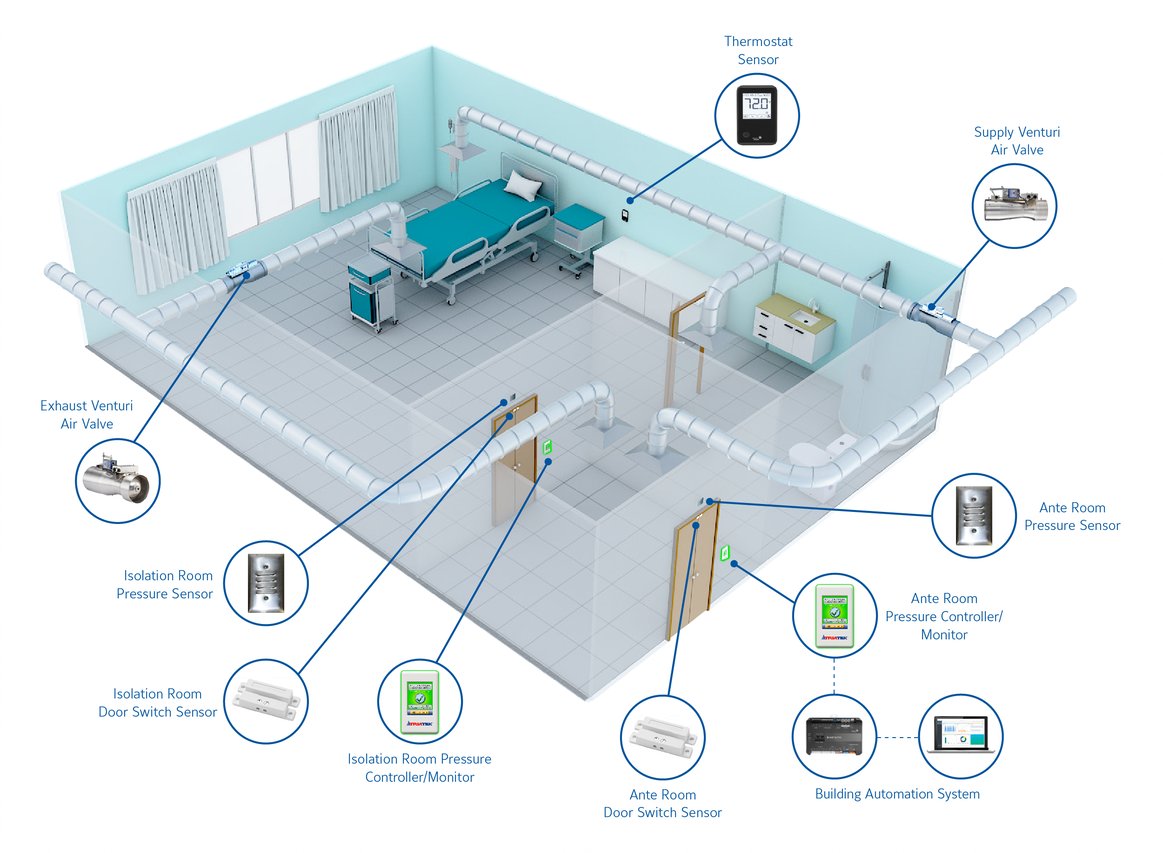Ensure your airborne infection isolation rooms (AIIRs) are working properly to provide clean air for patients and healthcare personnel
MILWAUKEE – (March 30, 2020) – As people around the globe navigate the rapidly evolving novel COVID-19 pandemic, Johnson Controls continues to power the mission of hospitals around the world. According to the CDC and ASHRAE, hospital HVAC systems play a vital role in mitigating the spread of diseases like COVID-19, MERS, SARS and tuberculosis.
When an infected person coughs or sneezes, respiratory droplets can travel through the air and be inhaled by people in close proximity, so it is critical to ensure airborne infection controls are working properly.
In accordance with recommendations from the CDC and the ANSI/ASHRAE/ASHE Standard 170-2017 Ventilation of Health Care Facilities, Johnson Controls put together a quick-read checklist for facility managers to help ensure their negative pressure isolation rooms are working properly and ready to provide best-in-class care.
“Johnson Controls and Triatek are committed to all of the courageous women and men working in healthcare across the world.” – Tyler Smith, general manager, Controls Specialty Products, Johnson Controls
The CDC recommends placing patients in airborne isolation infection rooms (AIIRs). AIIRs are negative pressure single-patient rooms with a minimum of six air changes per hour (12 are recommended for new construction).
Tips for verifying Airborne Infection Isolation Rooms (AIIRs) are working properly
Leverage the 10 tips below to help ensure your AIIRs are ready to receive patients. For more details, refer to the ANSI/ASHRAE/ASHE Standard 170-2017 Ventilation of Health Care Facilities.
- Verify the room sensors are calibrated and working properly
- Ensure room controllers and monitors are working and communicating with supply and exhaust airflow valves
- Verify the room is operating at a negative pressure relative to surrounding areas and ensure room pressure is being properly documented
- Verify correct air changes per hour are taking place per CDC/ASHRAE standards
- Confirm temperature and humidity ranges are in place per CDC/ASHRAE standards
- Verify room air is being exhausted directly outside through a HEPA filter
- Ensure doors are being kept closed except during healthcare personnel entry/exit
- Confirm patient rooms are visible on your building automation system, for prompt notification of any issues
- Consider updating older supply and exhaust VAV boxes to fast-acting Venturi air valve or measure airflow valve
- Plan for an influx of patients and how to address isolation requirements in your facility
For more information, please visit the Johnson Controls Insights section

0 Comments Leave a comment